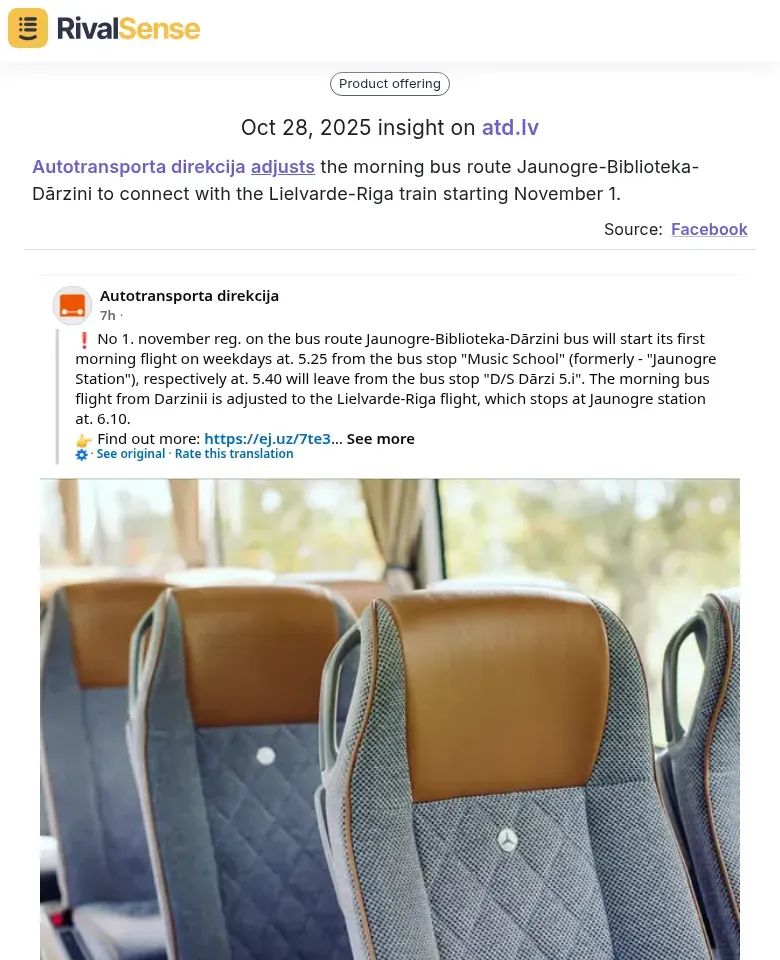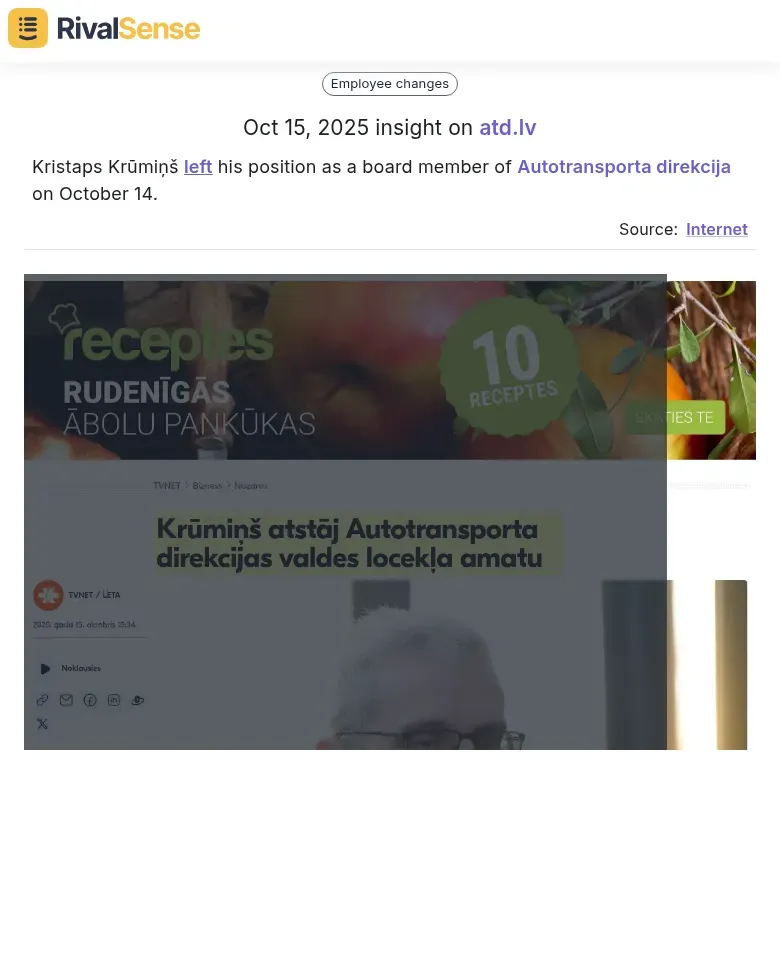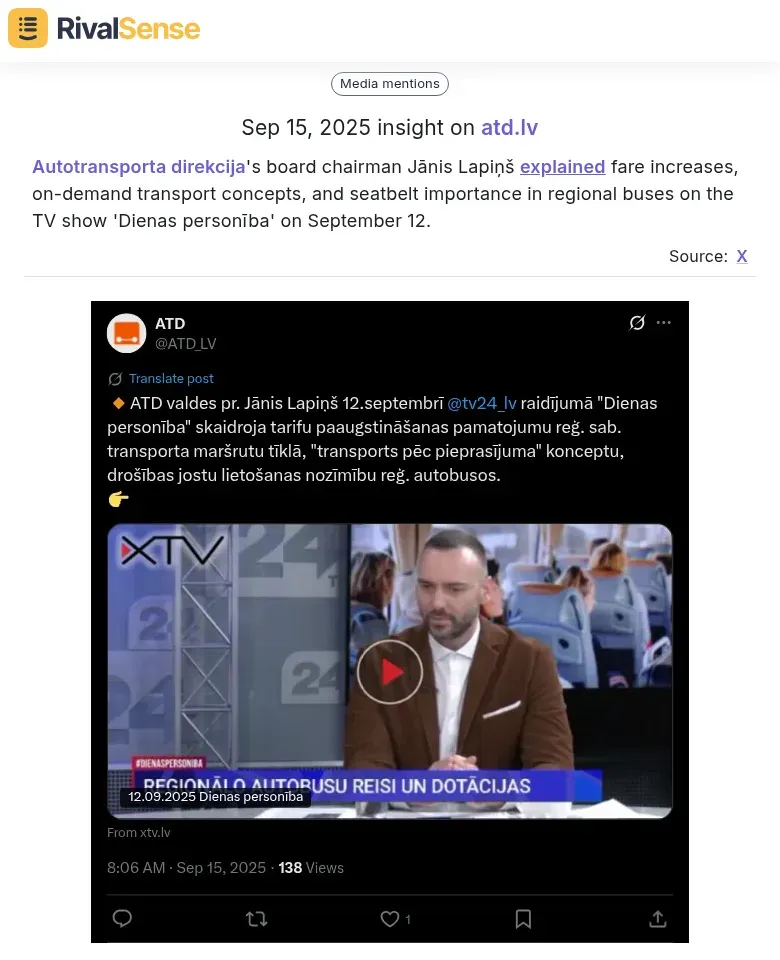Mapping Competitor Moves: Transport Industry Productivity Tactics
In the fast-paced transport industry, tracking competitor moves is no longer optional—it's essential for survival and growth. By monitoring rivals' operational shifts, pricing strategies, and service innovations, companies can swiftly adapt to market changes, boost efficiency, and meet evolving customer demands. For instance, if a competitor adopts real-time tracking technology, you can assess its impact on delivery times and customer satisfaction, then refine your own approach. Competitive intelligence helps anticipate industry trends, such as the shift to electric fleets, enabling proactive adjustments rather than reactive scrambles. Transportation leaders must embed these insights into strategic planning: start by identifying key competitors, use tools like RivalSense to track their announcements and performance metrics, and regularly review findings in team meetings. Practical steps include creating a competitor dashboard, setting up alerts for major moves, and conducting quarterly SWOT analyses. This disciplined approach ensures you stay ahead, turning competitor actions into opportunities for enhanced productivity and market responsiveness.
Route Optimization and Intermodal Connectivity
In the transport industry, route optimization and intermodal connectivity are pivotal for boosting productivity. Start by analyzing competitor route adjustments—track their schedule changes, frequency updates, and real-time performance data. For example, RivalSense tracked that Autotransporta direkcija adjusted their morning bus route Jaunogre-Biblioteka-Dārzini to connect with the Lielvarde-Riga train starting November 1.  This type of insight is valuable because it allows you to anticipate changes in passenger flow, identify gaps in your own network, and enhance service reliability by adapting routes for better connectivity.
This type of insight is valuable because it allows you to anticipate changes in passenger flow, identify gaps in your own network, and enhance service reliability by adapting routes for better connectivity.
Align bus and train schedules strategically to improve passenger convenience. Coordinate departure and arrival times at key hubs, ensuring seamless transfers. This increases ridership by minimizing wait times—consider this checklist:
- ✅ Audit competitor timetables regularly
- ✅ Synchronize peak-hour services
- ✅ Gather customer feedback on connectivity gaps
Leverage intermodal insights to spot network coverage gaps. If competitors lack integration in suburban areas, expand your market reach by introducing feeder bus services to train stations. Practical steps include mapping competitor intermodal points, assessing passenger flow data, and piloting new routes. This approach not only fills voids but also drives efficiency, turning competitor intelligence into actionable growth tactics.
Leadership Changes and Organizational Agility
Leadership changes in transport competitors reveal strategic shifts before they're public. When board members depart, anticipate talent opportunities—these executives often bring valuable industry insights and networks. For instance, RivalSense reported that Kristaps Krūmiņš left his position as a board member of Autotransporta direkcija on October 14.  This insight is crucial because it can signal internal restructuring, new strategic priorities, or potential talent acquisitions, allowing you to adapt your hiring or market strategies proactively.
This insight is crucial because it can signal internal restructuring, new strategic priorities, or potential talent acquisitions, allowing you to adapt your hiring or market strategies proactively.
Track executive movements systematically: monitor LinkedIn updates, press releases, and industry news for departures, new hires, or role expansions. High turnover often signals internal restructuring or new priorities, like a pivot to digital logistics or sustainability initiatives. For example, if a rival's CFO exits amid cost-cutting rumors, prepare for potential price wars or operational overhauls. Create a checklist:
- ✅ Identify key competitors and their leadership teams
- ✅ Set up alerts for executive changes
- ✅ Analyze departure patterns quarterly
- ✅ Assess governance changes in annual reports
This proactive tracking helps you adapt your strategy, whether by recruiting available talent or adjusting to market disruptions. Stay agile—use these insights to refine your own organizational structure and seize competitive advantages.
Pricing Strategies and Fare Adjustments
In the transport industry, fare adjustments are a delicate balance between profitability and customer retention. Start by decoding competitor fare increases: analyze their timing, routes affected, and communication strategies. For example, if a rival raises prices during peak season, assess whether it's due to operational costs or demand surges. Benchmark your pricing against market standards using tools like RivalSense to track real-time changes. Compare your fare structures—dynamic vs. fixed pricing—to ensure competitiveness without undercutting value.
When implementing changes, communicate transparently: highlight service improvements, loyalty benefits, or sustainability efforts to justify increases. Practical steps include:
- ✅ Monitor competitor announcements and customer feedback weekly
- ✅ Use A/B testing for small fare tweaks on low-risk routes
- ✅ Develop a checklist for price-change rollouts, covering internal training and customer messaging
This approach maintains trust while staying agile in a dynamic market.
Innovative Service Models and On-Demand Solutions
Leading transport competitors are adopting on-demand models—like ride-hailing and micro-transit—to meet flexible passenger demands. For example, companies use mobile apps for real-time bookings and dynamic routing, reducing wait times and empty seats. To implement this, start by analyzing competitor apps and piloting a small on-demand service in a high-demand area. Use data analytics to track peak hours and passenger preferences, enabling personalized promotions (e.g., discounts for frequent routes) and optimized fleet deployment.
This boosts efficiency by cutting fuel costs and improving customer satisfaction. However, scaling these models introduces complexities like driver management and surge pricing. Mitigate risks by gradually expanding services, investing in scalable tech infrastructure, and training staff on new systems. Checklist:
- ✅ Research competitor on-demand features
- ✅ Integrate GPS and analytics tools
- ✅ Test with a limited rollout
- ✅ Monitor KPIs like occupancy rates
- ✅ Iterate based on feedback
By blending innovation with cost control, you can stay agile in a competitive market.
Safety Communication and Public Relations
Safety communication is a powerful tool for building trust and credibility in the transport industry. Analyze competitor safety campaigns and media engagements to identify messaging that resonates with passengers. For example, RivalSense captured that Autotransporta direkcija's board chairman Jānis Lapiņš explained fare increases, on-demand transport concepts, and seatbelt importance on the TV show 'Dienas personība'.  This type of insight is valuable because it helps you understand how competitors handle public relations, address operational changes, and position themselves as thought leaders, enabling you to refine your own safety narratives and media strategies.
This type of insight is valuable because it helps you understand how competitors handle public relations, address operational changes, and position themselves as thought leaders, enabling you to refine your own safety narratives and media strategies.
Use these insights to craft your own transparent safety narratives, emphasizing real-time updates and compliance with regulations like NHTSA standards. Publicly address operational changes, such as route adjustments or new safety features, through press releases and social media to demonstrate accountability. Secure media appearances on industry podcasts or local news to enhance your brand's credibility. Practical steps:
- ✅ Monitor competitor PR moves using tools like RivalSense
- ✅ Develop a checklist for crisis communication, including pre-approved statements and media contacts
- ✅ Train staff to consistently communicate safety protocols
By leveraging these tactics, you can enhance passenger trust and solidify your market position.
Ready to transform competitor insights into actionable strategies? Try RivalSense for free at https://rivalsense.co/ and get your first competitor report today!
📚 Read more
👉 Competitor Financials & M&A Cheat Sheet: Track Hiring for Insights
👉 Leveraging Personnel Changes for Competitive Insights
👉 Competitor Market Research Reports: 5 Steps to Effective Analysis
👉 Competitor Partnership Framework: SaaS Growth Templates
👉 How JAL's Museum Expansion Uncovered Competitor Growth Strategies
